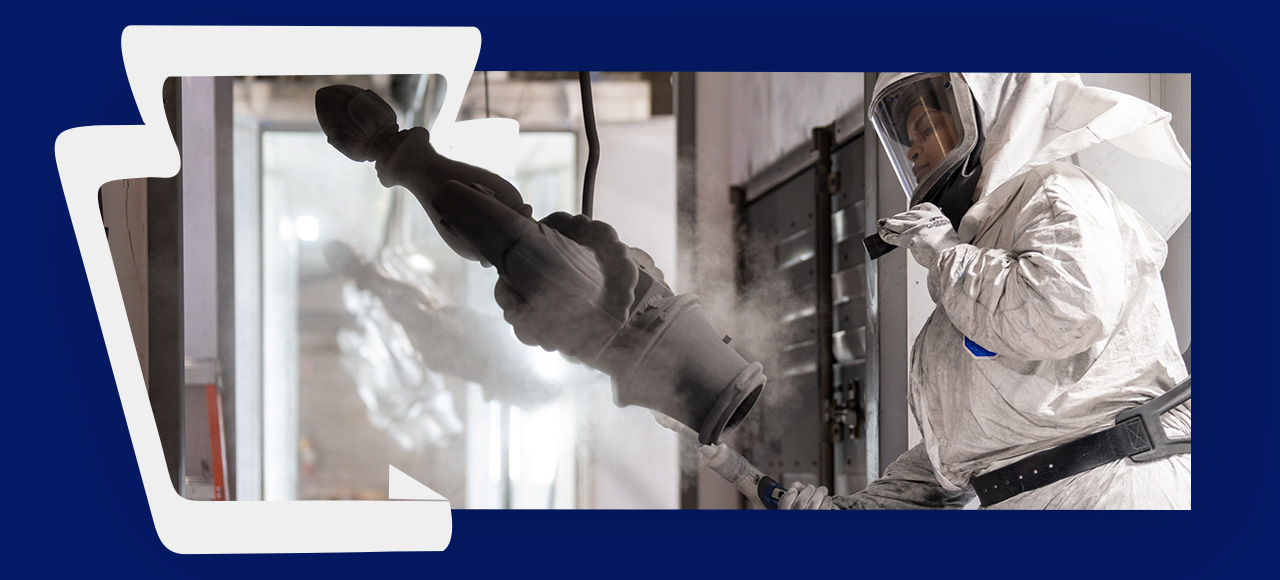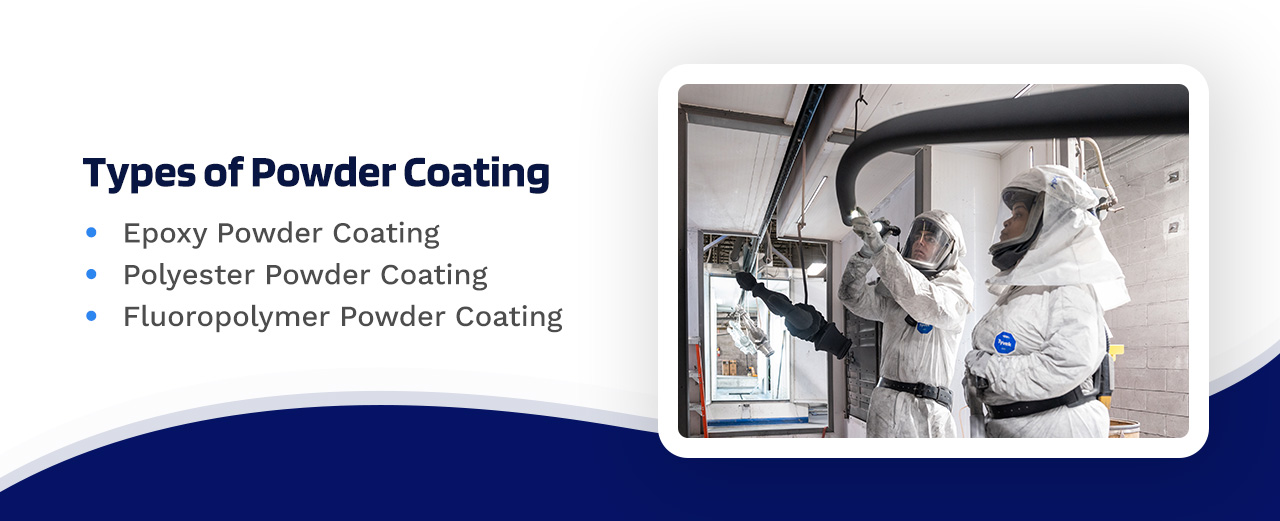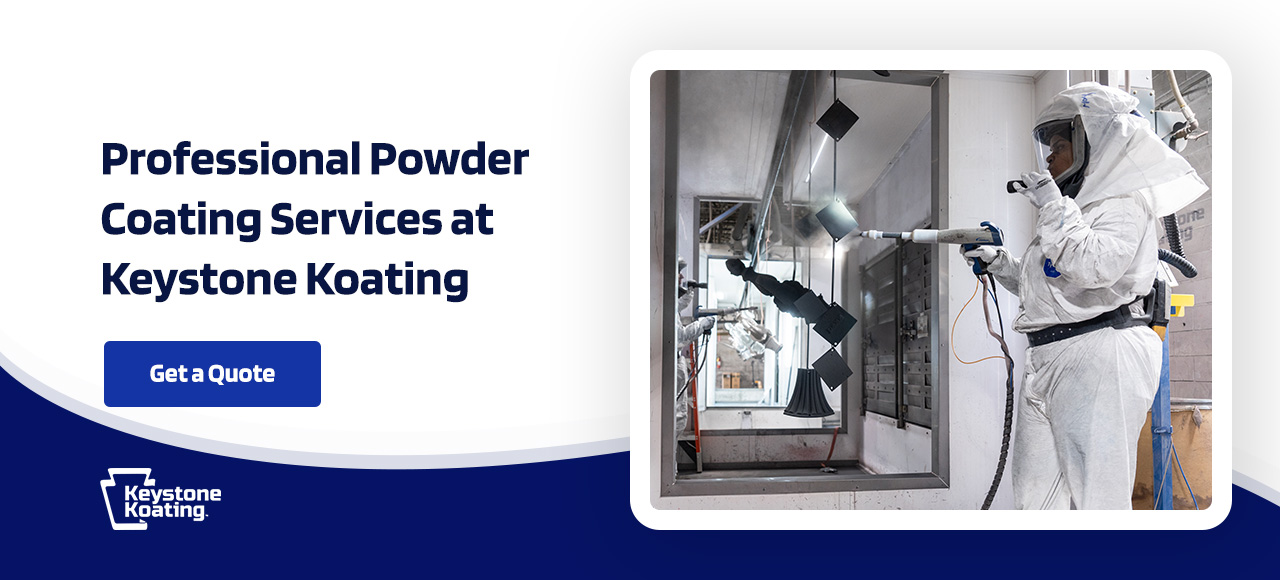
Powder coating is an alternative to classic liquid paint. This finish provides many benefits, including impressive durability, a wide variety of colors and textures, and long-lasting aesthetic appeal. Powder coating is also much more eco-friendly than liquid paint because it doesn’t contain solvents or heavy metals like lead or cadmium.
Understanding how powder coating is made provides more insight into what makes it so effective at protecting a substrate. Take a look at the raw ingredients list, the step-by-step manufacturing process and more below.
Quick Links
- Raw Materials Needed for Powder Coating
- Steps to Making Powder Coating
- Types of Powder Coating
- Professional Powder Coating Services
What Are the Raw Materials for Powder Coating?
A variety of materials are required to make high-quality powder coating. The exact substances required may vary depending on the formula used in production. However, some of the most common raw materials used in powder coating include:
- Resin: Resin is one of the main components of powder coating. There are various types of resin, and the type of powder coating will determine what type of resin is used.
- Curing agents: Curing agents bind and solidify the coating, and some are formulated to impart it with greater durability. Similar to resin, the type of powder coating being made will determine what type of curing agents are used.
- Accelerators: In order to increase or speed up the cure reaction rate, accelerators are added to the powder coating mixture.
- Fillers or additives: Fillers are commonly used to improve the surface texture, flow or other properties of the powder coating in a cost-effective way. Common examples of fillers include mica, talc, barytes, calcite, wollastonite and whiting.
- Extenders: Extenders are a specific type of filler that helps increase the coating’s durability and reduces glossiness. Aluminum silicate is a popular extender.
- Pigment: Pigment is added to the powder coating mixture to tint or color the product.
- Dry flow agents: Dry flow agents are necessary to help improve the free flow of the powder and prevent caking.
- Waxes: Waxes are added to a powder coated finish to give it increased hardness and scratch resistance.
- Heat stabilizers: Heat stabilizers are key in ensuring the powder coating is thermally stable. This addition allows the powder to maintain its properties throughout the curing stage and high-temperature powder extrusion. A variety of antioxidants can provide heat stabilization.
- UV absorbers: UV absorbers are added to protect the coating from UV degradation once it is applied. The UV absorbers, as the name suggests, absorb harmful UV rays and release the energy as heat before they can begin to break down the powder coating. However, it is important to note that only some powder coating types can support this addition.
Steps to Making Powder Coating
Once the manufacturer decides which type of powder coating to produce, the formula will determine which raw materials are needed. With the correct materials and tools in hand, the manufacturer can begin to create the powder coating.
The general steps to manufacturing professional powder coating include:
- Each raw material is carefully weighed according to the formulation.
- All of the raw powder coating materials are mixed together.
- The dry mixture then goes through a hot extruder, which melts and blends it further. Here, resins and the other raw materials are combined.
- The hot mixture then passes through cold rolls.
- Next, the powder passes through the cooling belt, where it is rapidly cooled and returned to room temperature.
- The cooled material then passes through a crusher, where the substance is broken up into chips.
- The chips undergo grinding to reduce them to the appropriate size.
- The powder then passes through filters to remove any remaining oversized particles or imperfections.
- Finally, the powder coating is then packaged, weighed and ready for application.
Powder coating is applied via an electrostatic process in which the powder particles are charged so they will stick to the substrate in an even layer. The finisher sprays the coating on and cures it at a high temperature, which changes the chemical composition to yield a smooth, durable surface that is permanently bonded to the workpiece.
Types of Powder Coating
The specific raw materials and processes required for powder coating can vary depending on the type of powder coating the production company is trying to generate. There are a variety of powder coatings, including urethane, silicone, acrylic, polyurethane and hybrids. However, three of the top powder coating types include epoxy, polyester and fluoropolymer.
Epoxy Powder Coating
Epoxy powder coating is a popular choice in many industries thanks to its corrosion resistance and advanced durability. This type of powder coating is typically readily available, making it easy for companies to complete the job in a timely manner.
While epoxy is a great powder coating choice, it is limited to indoor use. Epoxy powder coating can not withstand UV ray exposure, so time outdoors can lead to the powder coating chalking, fading or degrading. As a result, this powder coating type is most suitable for indoor applications like medical equipment.
Polyester Powder Coating
Polyester powder coating is another popular choice due to its cost-efficiency, weather resistance and low cure temperature. Polyester is ideal for outdoor products like fencing, furniture or decorations because of its durability against weather. Meanwhile, the low cure temperature also makes polyester a great choice for heat-sensitive products like power transmission or plumbing.
Another benefit of polyester powder coating is the wide color range the product offers, making it an excellent option for furniture or decorations.
Fluoropolymer Powder Coating
Fluoropolymer powder coating is a great choice for a durable, high-quality finish. This type of powder coating offers multiple benefits, including:
- One-coat capability
- Weather resistance
- UV stability
- Long-lasting color
- High corrosion resistance
- Great gloss retention
- Durability
Fluoropolymer powder coating also has a few variations within this coating type. The two common types of fluoropolymer powder coating include polyvinylidene difluoride (PVDF) and fluoroethylene vinyl ether (FEVE). A professional powder coating provider can help distinguish the different advantages of these coatings and recommend the right product for the job.
Professional Powder Coating Services at Keystone Koating
When it comes to powder coating, you can leave the details to us. At Keystone Koating, we have over 30 years of experience and various certifications and verifications. Our expert team members can provide you with high-quality powder coating services for both commercial and industrial projects. We will help you choose the right powder coating type for your needs and apply the coating for you to deliver a professional, high-quality finish.
Our team goes the extra mile with our eight-step pretreatment process to ensure the best results. With our personalized services and attention to customer service, we’ll have you covered from start to finish. We’re equipped with top-tier materials, products, processes and team members, and you can trust us to get the job done right.
Learn how our services can help you by requesting a free quote today.



